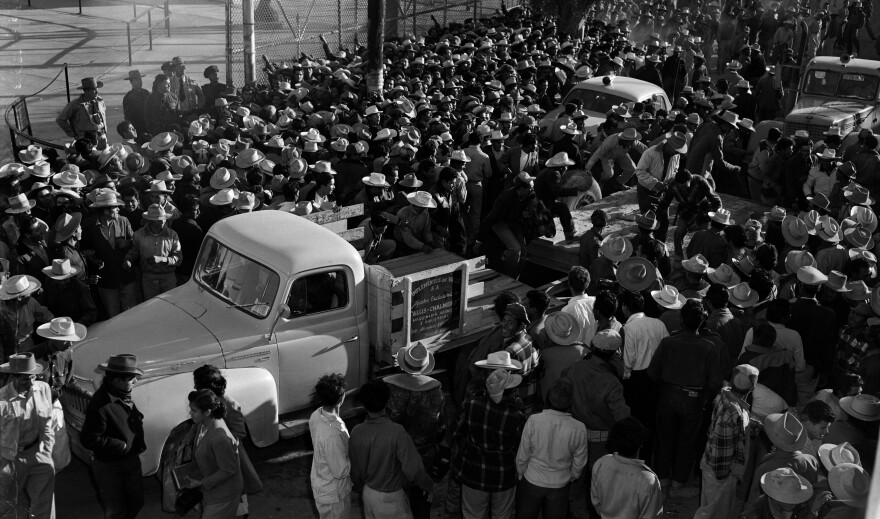Although Latino people have lived in Wisconsin nearly as long as it’s been a state, historian Sergio Gonzalez says Latino communities are often seen as being perpetual outsiders. Gonzalez is the author of Mexicans in Wisconsin and Strangers No Longer: Latino Belonging and Faith in Twentieth-Century Wisconsin.
Latinos started coming to the state in the mid-1800s, with larger groups of people coming in the early 20th century. Their story was a familiar one in Wisconsin.
“[Latinos] went out looking for the same opportunities that European immigrants had been looking for before them, and that was better economic opportunity in farming,” he explains.

In the 1920s, Gonzalez says agricultural industries began turning to migrant labor from Latin America, as European immigration to the U.S. began to wane. During World War II, the Bracero Program brought in Mexican citizens to fill in the labor gaps brought on by the war.
“Wisconsin, which of course depended on workers to do things like the cherry industry, the cucumber industry, sugar beets – you name it – needed workers to fill those roles and they found them in places like Mexico, and they found them in the Caribbean,” Gonzalez explains.
But as Latine workers flocked to rural parts of Wisconsin and other states, where these agricultural jobs were available, they weren’t always properly documented. As the nation faced a recession in the 1950s, the federal government launched the largest deportation operation to date: Operation Wetback.

Gonzalez explains, “It’s intention is basically to round up all of these people who have been coming into this nation, who have been recruited into this country to do this work. [The deportation scheme] destabilizes communities, it destabilizes economies, and it’s pretty disruptive.”
“Unfortunately what it also sets is a pattern that future presidential administrations follow. Whenever there’s an economic recession, they will turn to similar tactics to round up these people who are now seen as surplus labor,” he continues.
This pattern has continued through today. Former President Donald Trump has promised to deport as many as 20 million people from the United States, despite the fact the estimated number of undocumented immigrants is around 11 million people.
"I don’t think anyone can actually imagine what that would look like physically, but also the allocation of resources this would entail."
Gonzalez is unsure what this plan for mass deportations would mean for the State of Wisconsin in practice, but admits the impact could be devastating.
"I don’t think anyone can actually imagine what that would look like physically, but also the allocation of resources this would entail. What would it mean to communities to have to reallocate policing and law enforcement resources to do this type of work, much less the reality of what this would mean for economies all across the state," he explains.
Undocumented immigrants are a vital part of Wisconsin industries, accounting for as much as 70% to 80% of workers on dairy farms. There are also concerns that, like previous deportation schemes, U.S. citizens could also be deported. These concerns point to a larger cultural reality: although Latine communities have been a part of the state for more than a century, they’re still seen as outsiders.
"We talk about Latino immigrants as being newcomers, as being exotic, as being strangers in communities – as opposed to thinking of them as being another chapter in Wisconsin’s long history of immigrant belonging, immigrant making into this space," says Gonzalez.






